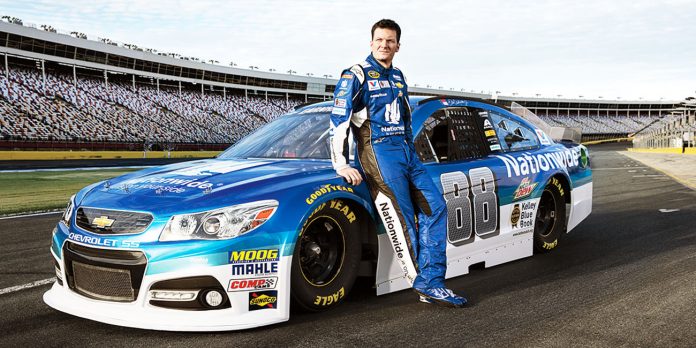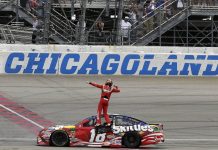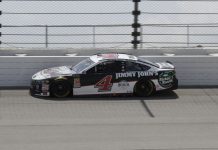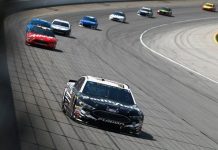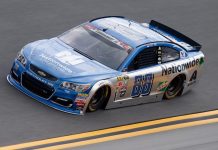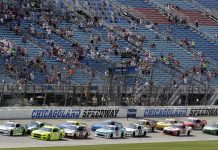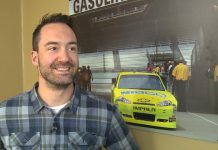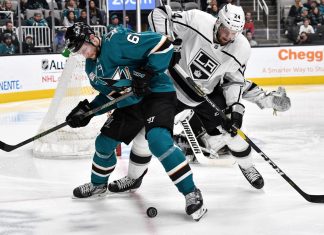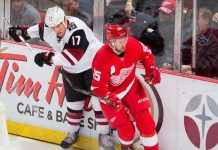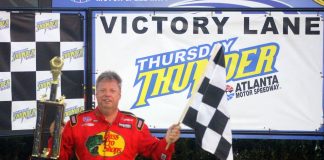CHARLOTTE, N.C. (AP) There was a moment during the Bristol Motor Speedway race that captured the essence of Dale Earnhardt Jr.
He was walking briskly to the care center for a mandatory health check after a crash. Flanked by a television reporter on one side, a handler on the other, he was explaining why he wrecked while hustling to his destination. A fan approached him from behind, Earnhardt turned, and the fan was shoved away when it became clear he just wanted a selfie.
Earnhardt never broke stride. He just gave his aw-shucks smile and continued on his way. Once cleared by the medical staff, he found the fan and posed for the photo.
Earnhardt is a 14-time winner of NASCAR’s most popular driver award for a reason. He’s personable and authentic and as close to the roots of racing as any driver alive today. When he walks away from NASCAR at the end of this season , he will take a lot more than 26 Cup wins.
NASCAR has already lost Jeff Gordon, the driver who took the sport mainstream and announced his retirement two years ago at 43, just like Earnhardt. Then a year ago it lost Tony Stewart, the talented, volatile rebel who said what everyone was too scared to say out loud.
Carl Edwards, friendly and a strong ambassador, walked away from NASCAR at the start of this year.
Now here goes Earnhardt, the blue-collar everyman. A third-generation racer from North Carolina who says ”ain’t” and ”Daddy” and talks the way the good ol’ boys always did.
So what does NASCAR do now, with its most bankable stars rapidly exiting stage left at a time when the sport needs to rebuild its audience?
”It will be an important year for fans to look at what other drivers are out there and who will make them interested in continuing to watch,” said Jill Gregory, chief marketing officer for NASCAR. ”We knew these days were going to come, we just didn’t know when.”
Gregory said the biggest challenge for NASCAR is introducing the current crop of young talent to fans and giving the drivers a chance to make their own marks rather than pigeonhole them in roles as the next Gordon, Stewart or Earnhardt.
”What is true to them? What is authentic?” asked Gregory. ”You look at Kyle Larson, he loves to race. That’s what he is going to do, and allowing him to do what he naturally loves, that’s what we want to highlight. I don’t think there’s an effort to say `We’re going to make this guy into the next Jeff Gordon.’
”We have to let it come naturally and what do they gravitate toward, because if it’s natural, that’s what makes it real to the fans. If we are trying to manufacture it, that’s how it is going to be seen. We have to let it play out.”
Earnhardt didn’t hesitate to name the future of the sport: Larson, the current Monster Energy Cup points leader, and Chase Elliott, his current teammate who replaced Gordon last season.
Elliott is the son of Hall of Famer ”Awesome” Bill Elliott, a Georgia native who grew up at NASCAR tracks. Larson is a dirt tracker from California who will race anything at any time and is likely headed in 2018 for a seat in the Indianapolis 500. Earnhardt also praised Ryan Blaney, another second-generation NASCAR driver, and Bubba Wallace, who have used social media to show the life of a millennial and not been afraid of overstepping their place.
Although their personalities are often overshadowed by the veterans, they are settling into their own niches and engaging a much younger fan base for a series whose origins are steeped in the bootlegging days of Prohibition.
25% Bonus via Western Union


